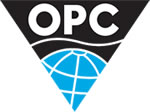Central & SE Asia / Australasia
Country profile: Timor Leste
| Location: | Southeastern Asia, northwest of Australia in the Lesser Sunda Islands at the eastern end of the Indonesian archipelago; note - Timor-Leste includes the eastern half of the island of Timor |
| Climate: | tropical; hot, humid; distinct rainy and dry seasons |
| Terrain: | mountainous |
| Size: | 15007 sq. km total (Land area: 0 sq. km ) |
| Population: | 1,108,777 |
| Languages: | Tetum (official), Portuguese (official), Indonesian, English note: there are about 16 indigenous languages; Tetum, Galole, Mambae, and Kemak are spoken by significant numbers of people |
| Government: | republic |
| Capital city: | Dili |
| Legal system: | UN-drafted legal system based on Indonesian law remains in place but is to be replaced by civil and penal codes based on Portuguese law; these have passed but have not been promulgated; has not accepted compulsory ICJ jurisdiction |
| Currency: | US dollar (USD) |
| Licensing: |
Country profile
The Portuguese began to trade with the island of Timor in the early 16th century and colonized it in mid-century. Skirmishing with the Dutch in the region eventually resulted in an 1859 treaty in which Portugal ceded the western portion of the island. Imperial Japan occupied Portuguese Timor from 1942 to 1945, but Portugal resumed colonial authority after the Japanese defeat in World War II. East Timor declared itself independent from Portugal on 28 November 1975 and was invaded and occupied by Indonesian forces nine days later. It was incorporated into Indonesia in July 1976 as the province of Timor Timur (East Timor). An unsuccessful campaign of pacification followed over the next two decades, during which an estimated 100,000 to 250,000 individuals lost their lives.
On 30 August 1999, in a UN-supervised popular referendum, an overwhelming majority of the people of Timor-Leste voted for independence from Indonesia. Between the referendum and the arrival of a multinational peacekeeping force in late September 1999, anti-independence Timorese militias - organized and supported by the Indonesian military - commenced a large-scale, scorched-earth campaign of retribution. The militias killed approximately 1,400 Timorese and forcibly pushed 300,000 people into western Timor as refugees.
The majority of the country's infrastructure, including homes, irrigation systems, water supply systems, and schools, and nearly 100% of the country's electrical grid were destroyed. On 20 September 1999 the Australian-led peacekeeping troops of the International Force for East Timor (INTERFET) deployed to the country and brought the violence to an end. On 20 May 2002, Timor-Leste was internationally recognized as an independent state. In late April 2006, internal tensions threatened the new nation's security when a military strike led to violence and a near breakdown of law and order in Dili. At the request of the Government of Timor-Leste, an Australian-led International Stabilization Force (ISF) deployed to Timor-Leste in late May.
In August, the UN Security Council established the UN Integrated Mission in Timor-Leste (UNMIT), which included an authorized police presence of over 1,600 personnel. In subsequent months, many of the ISF soldiers were replaced by UN police officers; approximately 80 ISF officers remained as of January 2008. From April to June 2007, the Government of Timor-Leste held presidential and parliamentary elections in a largely peaceful atmosphere with the support and assistance of UNMIT and international donors.
Energy production and consumption
| Oil | Gas | |
| Production: | 94,420 bbl/day (2005) | |
| Consumption: | ||
| Exports: | ||
| Imports: | ||
| Reserves: | 200 billion cu m (1 January 2006 est.) | |
| Major fields: |
Timor Leste - recent news
| 25 Nov 25 |
Timor Leste: New era of cooperation dawns for Greater Sunrise The Ministry of Petroleum and Mineral Resources of Timor-Leste (MPRM) and Woodside Energy have announced the signing of a Cooperation Agreement to carry out studies and activities to mature a Timor-based LNG concept (TLNG). |
| 28 Oct 25 |
Timor Leste: Finder Energy completes TIMOR GAP farm-in Finder Energy Holdings has advised that the Farmin Agreement with joint venture partner TIMOR GAP PSC 11-106 Unipessoal, Limitada (TIMOR GAP) has now completed following receipt of all necessary regulatory and third-party approvals. |
| 25 Sep 25 |
Timor Leste: Finder Energy announces transformational farm-in with TIMOR GAP Finder has entered into a Farmin Agreement with JV partner, TIMOR GAP PSC 11-106 Unipessoal, Limitada, a subsidiary of the National Oil Company of Timor-Leste (TIMOR GAP). Under the agreement, TIMOR GAP will acquire a further 10% participating interest in PSC 19-11, increasing their interest in the joint venture to 34%. Equity is available in the PSC. |
| 18 Jun 25 |
Timor Leste: Sunda Energy awarded Chuditch PSC extension Sunda Energy, the AIM-quoted exploration and appraisal company focused on gas assets in Southeast Asia, has announced that its wholly owned Timor-Leste subsidiary SundaGas has received a 12-month extension for Contract Year 3 of the TL-SO-19-16 Production Sharing Contract. |
| 16 Jun 25 |
Timor Leste: Sunda Energy provides Chuditch Update Sunda Energy has announced that the planned Chuditch-2 appraisal well on the Chuditch field in the TL-SO-19-16 Production Sharing Contract, planned for drilling in H2 2025, is now expected to be drilled in H1 2026. The Company intends to initiate new or revisited discussions with potential funding parties that have expressed an interest in participating in the development of the Chuditch project and the export of gas for LNG. |
Timor Leste - more news
Other countries in this region
- Australia,
- Bangladesh,
- Brunei,
- Cambodia,
- China,
- Fiji,
- Hong Kong,
- India,
- Indonesia,
- Japan,
- Laos,
- Malaysia,
- Maldives,
- Mongolia,
- Myanmar,
- Nepal,
- New Zealand,
- North Korea,
- Pakistan,
- Palau,
- Papua New Guinea,
- Philippines,
- Singapore,
- South Korea,
- Sri Lanka,
- Taiwan,
- Thailand,
- Vietnam












